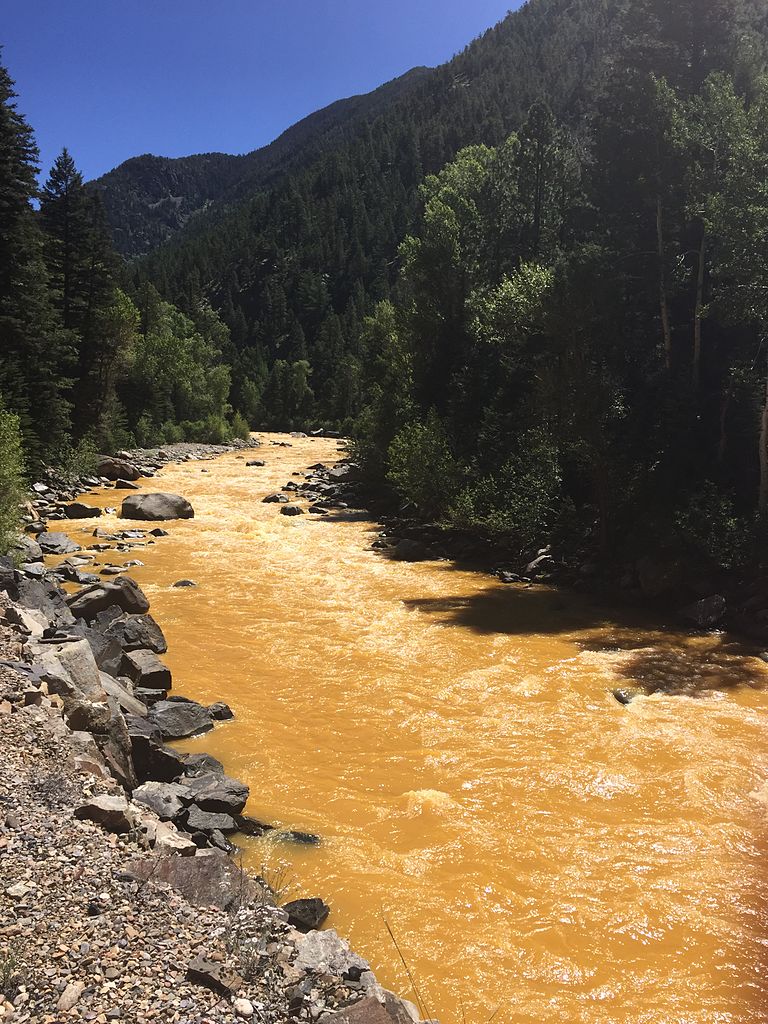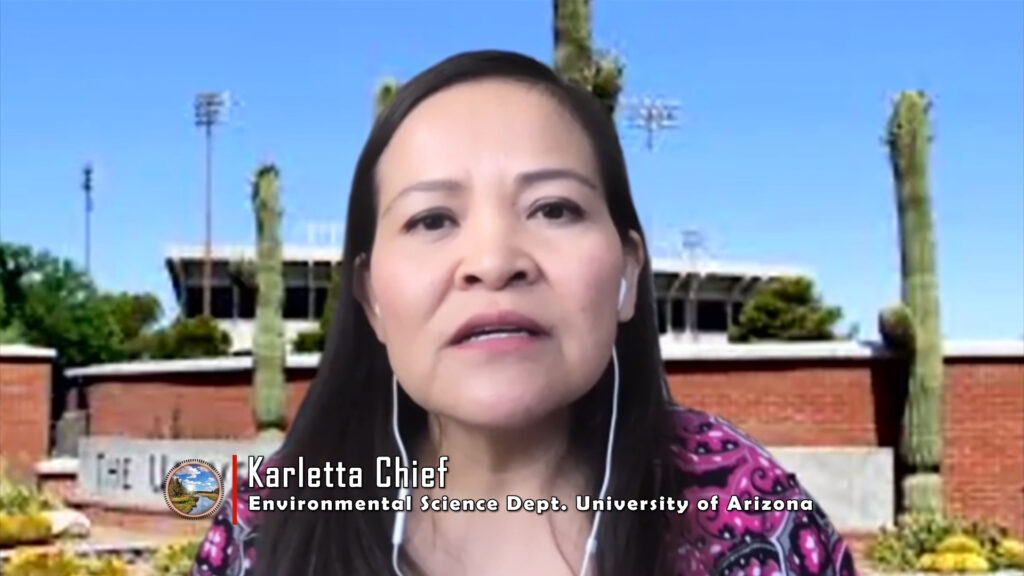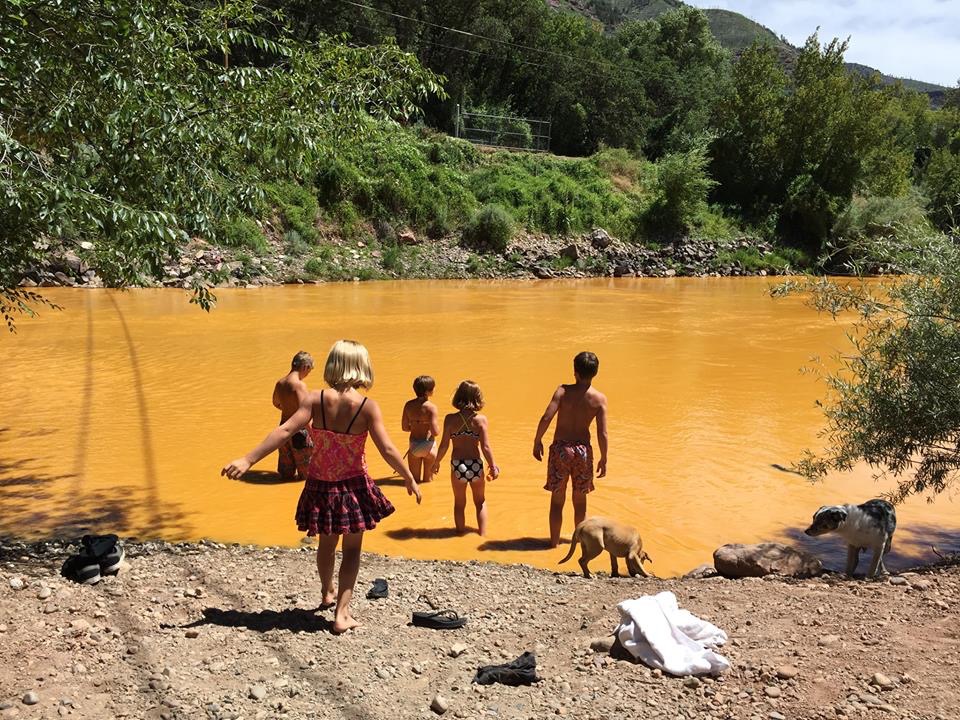All We’ve Surveyed: Five Years After the Gold King Mine Spill
By Laura Paskus
Five years ago, crews reopening an abandoned mine in the mountains of southern Colorado breached a containment wall, spewing three million gallons of mining waste into a tributary of the Animas River.
Given the mine’s alpine location—which averages 15 feet of snow each year—fieldwork is limited and conditions can change drastically between seasons. Tasked with cleaning up the mine’s mess, contractors hired by the U.S. Environmental Protection Agency were trying to open up the mine adit, which was flooded with a burnt orange toxic soup that had simmered for decades and decades.
The Gold King Mine shut down in 1923, but operated continuously from 1886 until 1917—producing more than 650,000 tons of ore each year in the quest for grams of gold, silver, lead and copper.
On the morning of August 5, 2015, the excavator operator hit what he thought was a “spring.” After just a few minutes, the water reportedly turned from clear to red to orange, spurting into the air, inundating the contractor’s truck and blowing over the access road. That acid mine drainage—full of cadmium, lead, zinc, mercury, iron, and manganese—roared down the North Fork of Cement Creek, and then into the Animas River.

Living just a few miles south of New Mexico’s border with Colorado, Susan Palko-Schraa remembers hearing about the spill that August day. Then, she and her husband waited for the sludge to come down the Animas River past their home.
“It was late afternoon, and we were standing right by the river,” Palko-Schraa says today. “Originally there was just maybe a foot wide of orange in the middle of the current, and you could trace it where the current went.”
The orange stripe widened. But as dusk fell, she thought maybe it wouldn’t be that bad.
Then the entire river turned a neon orange.
In the aftermath of the Gold King Mine spill there were lawsuits, including by the state of New Mexico and the Navajo Nation against the EPA, whose contractors caused the spill. There was also funding for studies. Early on, to see how fish and wildlife were affected by the spill and to understand changes in the water’s chemistry. There were also longer-term studies to see how the spill might have affected groundwater.
Palko-Schraa and her husband became involved in a citizens advisory committee convened by the New Mexico Environment Department. Over the course of two years, there were monthly meetings; neighbors asked questions and scientists presented their findings.They also joined a state study to see if the spill affected the local aquifer.
For two years, hydrologist Talon Newton with the New Mexico Bureau of Geology sampled about two dozen private wells in the Animas Valley, including the Palko-Schraa’s. With funding from the EPA, the state wanted to better understand the groundwater systems in the area, and how they interact with the river and irrigation canals. Newton and his crew also wanted to know if the spill affected the shallow groundwater resources. “The good news is we didn’t see any obvious impacts from the Gold King Mine spill,” says Newton.
They weren’t the only ones looking for answers. The Animas flows into the San Juan River, which winds across the western Navajo Nation.
Karletta Chief, a hydrologist with the University of Arizona’s Environmental Science Department, tested more than 60 households in three Navajo communities—Aneth, Utah and Shiprock and Upper Fruitland in New Mexico—looking for lead and arsenic, which can have long term health impacts. With her team of researchers from the University of Arizona, Northern Arizona University and the Navajo community, she also convened focus groups, and for years afterward, talked to Diné farmers who rely upon the waters of the San Juan.
“We found that there are over 40 different ways that the Navajo people use the San Juan River,” she says, “not just for recreation, not just for farming, but they also use it for culture, for spiritual practices, for arts and crafts and many more.”

“The San Juan River is considered a male deity, and it provides water for farming, water to grow just natural plants used for cultural practices and even medicine,” she says, adding that it’s important to the ecosystem where people live and hunt, too. “The water itself is very important to the Navajo people and so seeing this water contaminated had a huge cultural impact to the people.”
Chief explains they didn’t find immediate short-term environmental and health harm to Diné farmers and their families. But the cultural, mental, and financial impacts of the spill still linger.
This part of the Navajo Nation is considered the “breadbasket,” says Chief, who is Diné. Prior to the spill, people were growing crops for sale, as well as using them for cultural activities and ceremonies. “Suddenly, that stopped,” she says. “And people were worried about their reputation and how other Navajos perceived them and their crops.” Today, some still lack the confidence to go back to farming, after having seen that neon orange water flow past their homes and farms.
For hundreds of years, people have put their hands into the soil, planted heirloom seeds, and relied daily upon the waters of the San Juan. They want to know their children, their grandchildren, and future generations can do the same. Safely.
That’s why it’s so important for scientists who study environmental and health impacts to understand how people themselves relate to the lands and waters around them—and how they perceive the risks they and their families and communities face.
“When we as scientists don’t understand the community and their culture and their language and their way of life, there is no way that we can accurately assess the risk that one may have to the contamination,” she says. “So not only are you doing your science wrong, but you’re not doing a good [job] of communicating that science.”
Today, the spill still highlights bigger problems. Upstream, there are more than 20,000 abandoned mines. These are mines that were excavated and then left—after earning profits off the minerals, the private owners and companies moved on, leaving the federal government to clean up the mines. Even when there aren’t blowouts, these mines and their tailings piles seep toxic chemicals and hard minerals into creeks and rivers all across the region.
In a technical evaluation of what happened, the U.S. Bureau of Reclamation noted the “conditions and actions that led to the Gold King Mine incident are not isolated or unique, and in fact are surprisingly prevalent.” Standards for reopening and remediating abandoned mines that are flooded are inconsistent across agencies, the authors wrote, adding there is “little in actual written requirements that government agencies are required to follow when reopening an abandoned mine.”
Not only that, but the blowout wasn’t just due to an accident on August 5, 2015. According to the report, the release was due to a “series of events spanning several decades.”
Today, Susan Palko-Schraa is confident the river that runs alongside her home is safe. But a recent headline in The Durango Herald made her wonder about the future.

According to the story from Jonathan Romeo, the EPA is proposing to store toxic waste from abandoned mines, including Gold King, near Silverton, Colorado. That dump would take in about about six thousand cubic yards of toxic sludge each year.
“I hope and pray that there is wisdom that it is away from the watershed,” she says. “Clearly we do have to deal with the mining waste but we can deal with it with caution and wisdom and we can protect what’s most valuable—and in the desert Southwest we all know water is of essential value.”
This story was supported by a grant from The Water Desk, an independent journalism initiative based at the University of Colorado Boulder’s Center for Environmental Journalism.
To watch footage of the Animas River from Silverton, Colorado to Shiprock, New Mexico shot by LightHawk volunteer pilot Marijke Unger, visit our YouTube page.


[…] Quote from the source: … […]